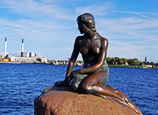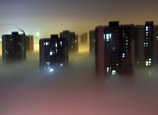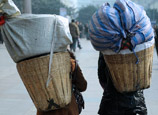
JAKARTA, Jan. 25 (Xinhua) -- Rini Huang, a resident in this capital city, has succeeded in freeing herself after being trapped for three days in her house which was flooded by neck-high waters last week.
"The water and electricity supply had been cut here, the roads were flooded by muddy waters," Rini told Xinhua, "I cannot cook, wash, or even contact my friends or relatives."
Rini, who lives in West Jakarta's Jelambar neighborhood since childhood, said the floods in Jelambar last week were the worst she has experienced in her life. "I hope the rainy season would end soon so that the water in the streets would subside."
But Rini's wish may not be realized after weathermen warned that rains would continue and may prolong the flooding in the metropolis that has already killed 26 persons and displaced some 250,000.
Last Thursday's waist-deep floods paralyzed the city and Jakarta's main thoroughfare was covered with mud. Even the presidential palace was not spared as waters flooded the complex for the first time in Jakarta's history.
President Susilo Bambang Yudhoyono was pictured standing in floodwaters with his trousers rolled up to his knees.
The floods brought Jakarta's already infamous traffic into a standstill, with drivers trying to squeeze out from the main streets to make a detour and motorcyclists struggled to wade through the floods.
Jakarta, Southeast Asia's largest metropolis with a population of about 10 million, sits on a low-lying swampland with 13 rivers flowing through the city. About 40 percent of the city's land area is below sea level, making it prone to flooding.
Survey from the University of Indonesia's Center for Political Studies during the height of the gubernatorial election campaign last July showed 22 percent of Jakarta residents it surveyed named floods as Jakarta's second biggest problem that need to be solved by the new governor.
Jakarta's successive governments have done little to mitigate the threat. Flood control program centered on the construction of a large canal and a reservoir project that would reduce the flow of waters from rivers has not been implemented after decades of planning.
During the 2007's mega floods that killed 50 and displaced more than 300,000, then Governor Sutiyoso wash his hands of any responsibility saying that the floods were "natural phenomenon" that occur every five years.
Joko Widodo, the capital's new governor who assumed office last October, was unlucky as the five-year cycle of floods happened just a few months into his term. Unlike his predecessor, Governor Widodo said that Jakarta's flooding could not be solved by just blaming God.
He promised that the government would soon adopt a flood control project that would move waters from the streets faster and thus mitigate its effects on the economic lifeblood of the city.
But Rini pointed out that despite the promise of politicians to solve flooding during their campaign she has never seen any maintenance or improvement of the city's drainage system. "Jakarta citizens have the bad habit of dumping their garbage into rivers and gutters. Why can't the government do something about this?" Rini said.
Marco Kusumawijaya, an urban planning expert at the Jakarta- based Rujak Center for Urban Studies, told Xinhua that the city's chronic flooding that occurs every year during the rainy season from October to April, is caused mainly by deforestation in upstream areas, the sinking of Jakarta, poor rain water absorption due to too much asphalt and concrete, as well as the clogged water ducts and poor drainage.
"I don't know why the Jakarta administration doesn't prefer to coordinate and cooperate with the neighboring provinces to reduce the forest cutting in the river catchment area," Marco said, adding that the "city can also install more pipe to supply the tap water so residents will not be forced to extract groundwater.
Waters in Jakarta's 13 rivers mostly come from the hills near the West Java's city of Bogor where deforestation is rampant following the construction of weekend villas and travel resorts.
According to Marco, only 40 to 50 percent of Jakarta population may enjoy the tap water, forcing others to pump groundwater.
The Bandung Institute of Technology's research shows that Jakarta is sinking at a rate of 10 centimeters a year due to groundwater exploration and pressure from high-rise buildings. Besides, green open spaces in Jakarta which used to absorb water is now used for the construction of malls, office buildings, apartments and other concrete structures, causing the surface rain water to flood the city's streets. "The city should issue a regulation to control the use of public land. It should tax or punish the developers who do not build infiltration wells or tanks for rain water," Marco said.
But Marco doubts whether the government would actually heed his call since the construction boom will bring more economic interests.
Andrinof Chaniago, a public policy analyst at University of Indonesia, told Xinhua that Jakarta is now pursuing short-term economic expansion and ignoring the quality of growth and the city residents' welfare. "City authorities should overhaul the city's antiquated drainage system to create a flood-free metropolis," Andrinof said.
















 Beijing fantasy emerges in dense fog
Beijing fantasy emerges in dense fog


![]()
